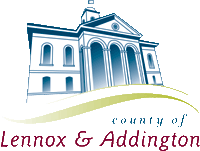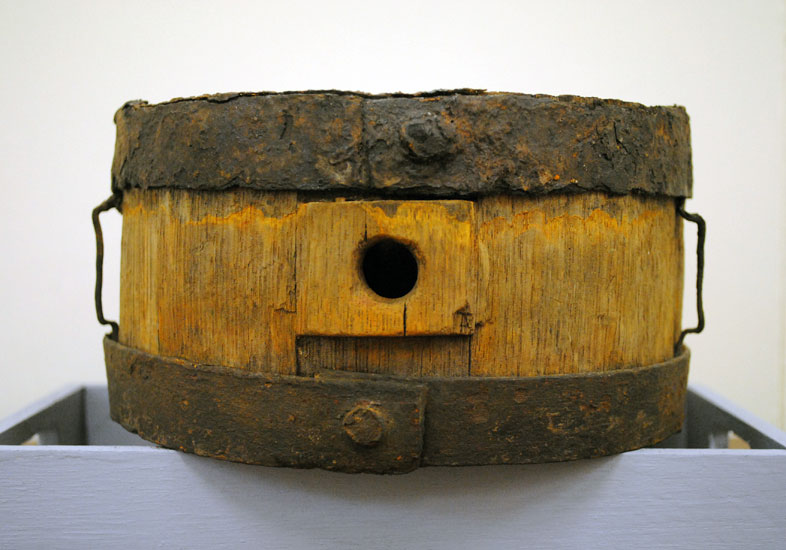
Borders & Frontiers (1800-1820)1812 Canteen and Cannonballs |
|||
|
|||
c.1812 canteen found in the waters at the end of Davey Street in Bath |
On November 6, 1812, Commodore Chauncey in the Oneida and fleet of six schooners, mounting forty guns and carrying 430 men, set out from the American naval base at Sackett's Harbour to attack Kingston. War had been declared between Britain and the United States in June that year. DISCOVER MORE![]()
On November 8, he sighted the Royal George off the False Duck Islands. The Royal George, the largest ship on the Great Lakes, had been launched from the British naval base at Kingston under Captain Hugh Earle. Chauncey chased her into the Bay of Quinte, but lost her at night fall when she sailed through the upper gap into the North Channel between Amherst Island and the mainland. Next morning Chauncey pursued the chase into the North Channel. In passing the Village of Ernest Town, he saw a small schooner at anchor in the harbor. Chauncey sent a flag of truce on shore, demanding the surrender of the schooner, threatening to destroy the village if the vessel was not surrendered.
Chauncey continued in pursuit of the Royal George to Kingston, detaching Lieutenant Macpherson in the Hamilton "to take out the schooner's sails and rigging, and burn her." The Kingston Gazette, November 17, 1812, reported that on Tuesday morning last, information was conveyed to town that seven American vessels full of men, were approaching … on their way down the Bay of Kenty. In the morning, they burned a small schooner belonging to Messrs. Fairfield and Co.".
From 1808-1812, William and Jonathan Fairfield sailed the Two Brothers, a schooner-rigged with two masts, between Kingston and Lewiston on the Niagara River. Their brother, Benjamin Fairfield, owner of the schooner, did not claim for his loss until 1824. In an oath sworn before George Ham, J.P., he stated that before the flag of truce was sent on shore, he cut the rigging to render the schooner unmanageable. Shortly after he surrendered the schooner, the enemy set it on fire, destroying the schooner. He valued the schooner at £ 250 and his property loss at £ 300. His claim was witnessed by John George, Seaman, and Peter Davy, Innkeeper, who confirmed that Benjamin Fairfield had surrendered the schooner to save the Village from destruction.
Divers found a canteen dating to 1812 in the waters at the end of Davey Street. The initials "x" and "jw" are carved on the reverse side. Two of these cannon balls, also dating to this time, were found on the Hough property just east of Bath. One was found in the foundation of the Hough House and another in a field just behind the house.
Chauncey pursued the Royal George to Kingston where he was confronted by the Royal Navy. He left in defeat. In his report of the incident to the Secretary of the Navy, Chauncey stated, "Two Brothers Burned".
Submitted courtesy of the Bath Museum, Bath
© Lennox & Addington County Museum & Archives
97 Thomas Street East, Napanee, Ontario, Canada K7R 4B9
Funding provided by the Government of Ontario and the County of Lennox & Addington




